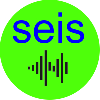Geophysical Methods
exploration, near surface and marine methods
Seismology |
Seismic exploration |
Seismic source |
Seismic Refraction |
Seismic Reflection |
Seismic MASW-REMI |
Borehole |
Marine Seismic |
Seismic Processing-Imaging |

Seismic Refraction
Seismic methods can provide valuable information of the subsurface, such as the seismic velocity structure of the geology (e.g. using seismic refraction, surface-wave methods) and the presence of geological layers due to their seismic reflectivity (e.g. seismic reflection). In both cases changes in geological material density can highly influence the propagation of a seismic wave through the subsurface. Large contrasts in the density of the subsurface can be measured, modelled and displayed in a seismic velocity map or cross-section format (P-wave, Shear-wave). These velocity maps provide information on the gradient’s changes in material stiffness. In the case of seismic reflection, geological reflectors/layers can be displayed where a large acoustic impedance/density contrast exists between geological material boundaries. Seismic techniques are commonly used to determine site geology, stratigraphy, and rock quality. These techniques provide detailed information about subsurface layering and rock geomechanical properties using seismic acoustical waves. Reflection and Refraction are the most commonly used seismic techniques. These methods determine geological structure and rock velocities by either refracting or reflecting waves off boundaries between rock units with different seismic velocities or impedance. Seismic Refraction- The seismic refraction utilizes acoustic waves generated by an impact or small explosive source to measure depths to bedrock or overburden layers of sedimentary rock and to infer bedrock faults or fracture zones. Seismic response are plotted through distance along the geophone array to identify individual layers, and to compute layer thicknesses and seismic velocities.PASTE RESPONSIVE AD
Seismic refraction is a seismic technology that can be used to measure the P-wave velocity, Vp, of the subsurface geology.
Vp information can be useful for interpreting depths to bedrock and other geological boundaries and is directly influenced
by the elastic modulus of geological material, i.e. the stiffer or more consolidated the geologic material, the larger the value of Vp.
Seismic refraction cannot however measure inversions in layer Vp, e.g. stiffer geological layers overlying less stiff geological layers.
It is useful in defining the first basement material interface, and this can be used to constrain other layer interpretations with
other geophysical technologies e.g. Seismic Refraction is affected by external seismic noise and is recommended to be utilised in
areas of low seismic noise e.g. away from active drill rigs. Layers where the velocity decreases with depth are invisible to seismic
refraction and floaters and boulders in sediments cannot be detected. P-wave velocities measured using the seismic refraction method
can also be correlated with material rippability e.g. Caterpillar or Komatsu Rippability charts. Seismic refraction investigates the
subsurface by generating arrival time and offset distance information to determine the path and velocity of the elastic disturbance
in the ground.
The disturbance is created by shot, hammer, weight drop, or some other comparable method for putting impulsive energy
into the ground. Detectors, laid out at regular intervals, measure the first arrival of the energy and its time.
The data are plotted in time – distance graphs from which the velocities of the different layers, and their depths can be calculated.
This is possible because rays (expanding wave front) of the disturbance wave follow a direct route and is the first arrival energy at the close–in geophones.
The rays are refracted across layer boundaries where there is a difference in elastic and density properties.
The critically refracted ray travels along the layer interface, at the speed of the lower layer, and continuously “feeds” energy back to the surface, to be successfully detected by the line of geophones.
At some distance the refracted ray becomes the first arrival. Shots are normally collected at evenly spaced intervals throughout the entire length of the line in order to increase coverage and generally
determine whether or not the layering is horizontal, dipping or undulating. The acquired data are computationally intense. A ray–tracing software is used to iteratively arrange all travel times and
velocities, and to be able to consider a large number of layers or velocity contrasts where they are present. A first energy arrival picking program, with such features as zoom, filtering, time
stretching, separation of traces, AGC and balancing of traces, is also applied. Seismic Refraction P-wave: Refraction surveys are the most cost-effective method for mapping bedrock surfaces.
Can be performed with both Vibroseis and Impulsive sources. Seismic Refraction S-wave: Shearwave refraction techniques can be employed to define voids under concrete and re-bar and along pipelines and sewers, etc.
PASTE RESPONSIVE AD